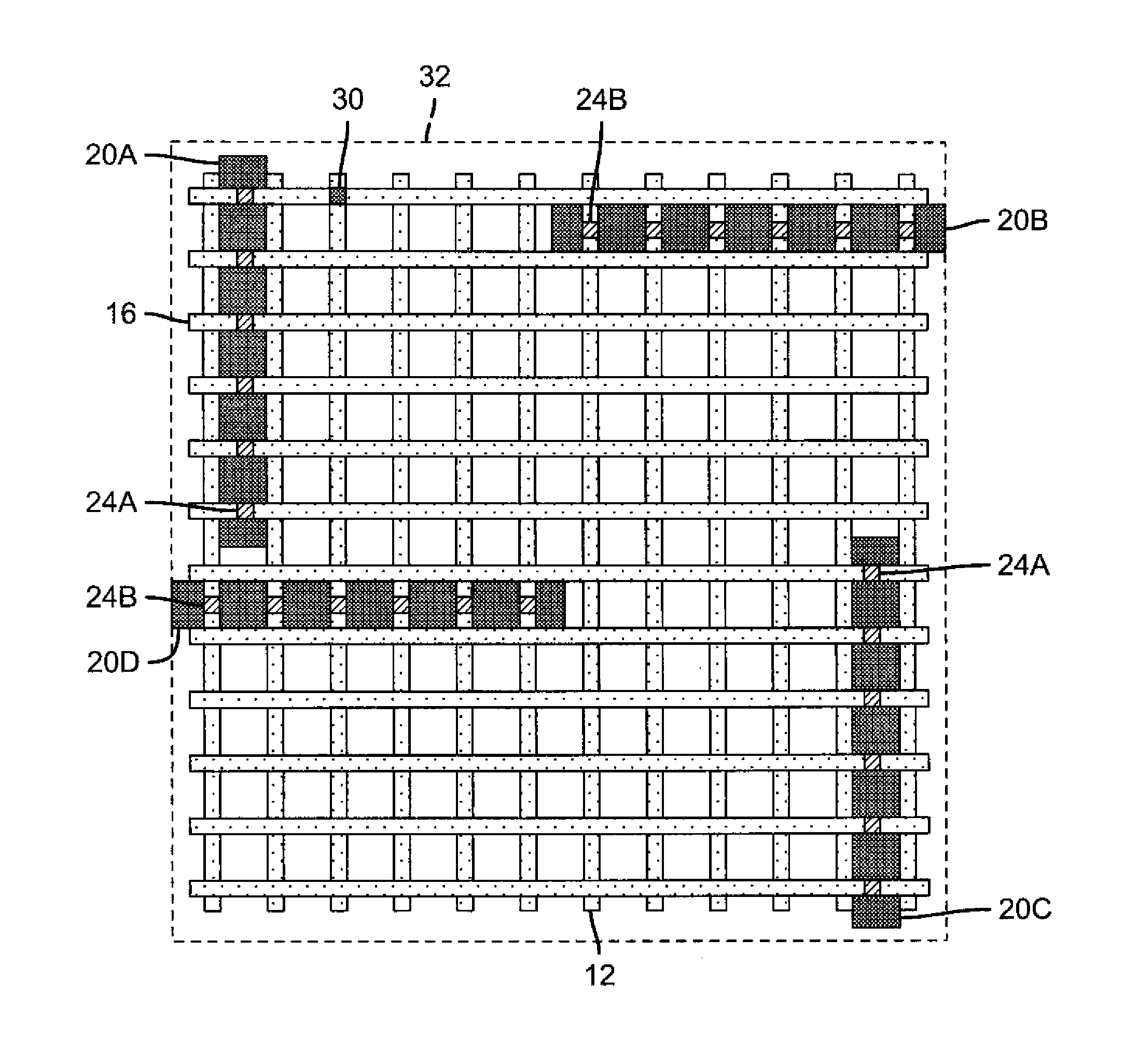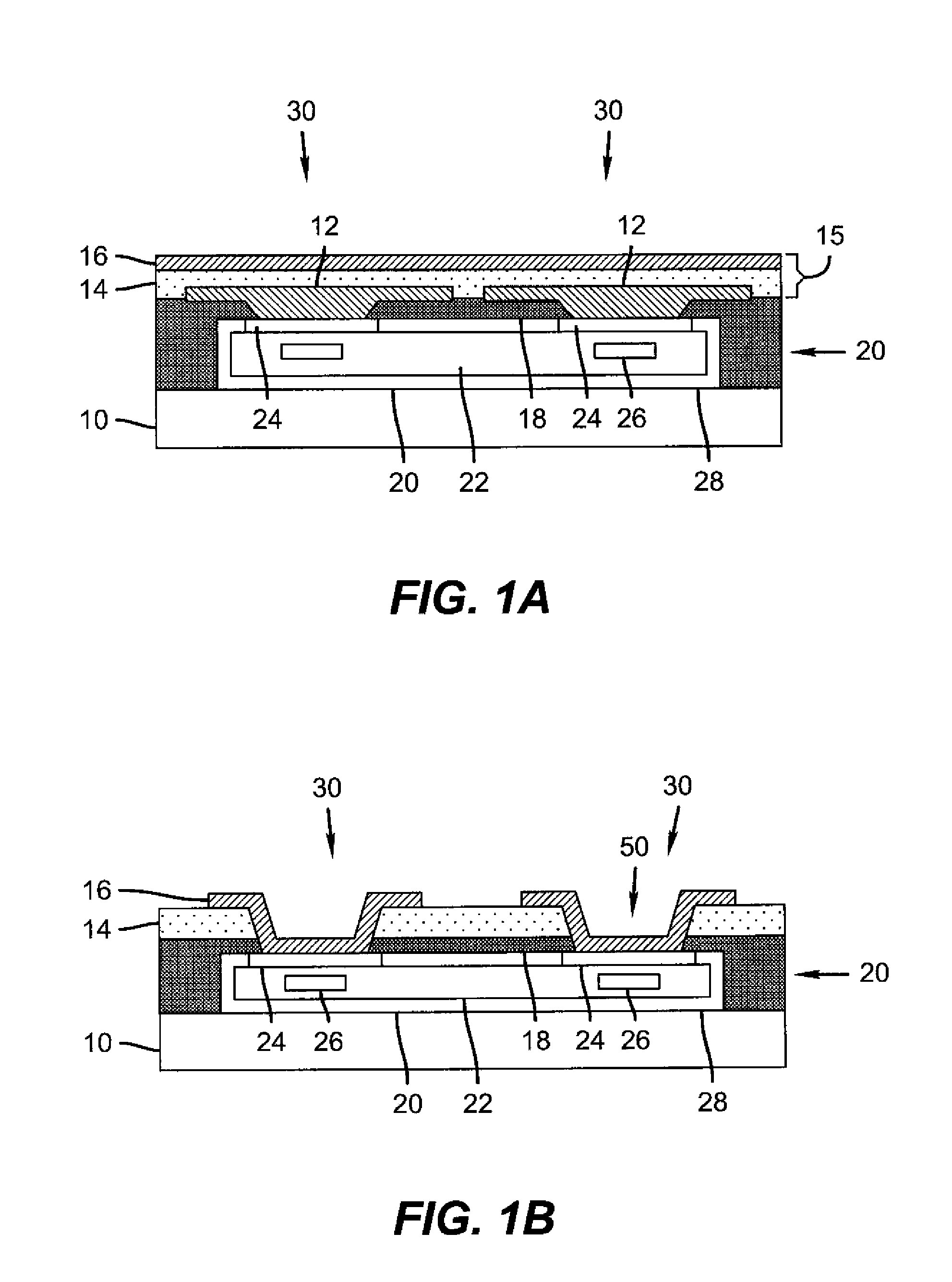Chiplet driver pairs for two-dimensional display
a chiplet driver and two-dimensional display technology, applied in semiconductor devices, instruments, computing, etc., can solve the problems of limited number of rows (or columns) of passive-matrix drive devices, power required for non-imaging pre-charge, flicker can become perceptible, etc., to achieve the lowest cost, reduce the number of components and connections, and improve performance
- Summary
- Abstract
- Description
- Claims
- Application Information
AI Technical Summary
Benefits of technology
Problems solved by technology
Method used
Image
Examples
Embodiment Construction
[0033]Referring to FIGS. 3 and 1A, in one embodiment of the present invention, a display device includes a substrate 10 and a first layer having an array of row electrodes 16 formed in rows across the substrate 10 in a first direction and a second layer having an array of column electrodes 12 formed in columns across the substrate 10 in a second direction different from the first direction. Pixel 30 locations are formed over the substrate 10, where the row and column electrodes 16, 12 overlap. One or more layers 14 of light-emitting material are formed between the row and column electrodes 16, 12 to form a two-dimensional array of pixels 30 in the pixel locations. A plurality of row driver chiplets 20A, 20C and a separate plurality of column driver chiplets 20B, 20D are distributed relative to the substrate 10, each row driver chiplet 20A, 20C exclusively connected to and controlling an independent set of row electrodes 16 and each column driver chiplet 20B, 20D exclusively connecte...
PUM
 Login to View More
Login to View More Abstract
Description
Claims
Application Information
 Login to View More
Login to View More - R&D
- Intellectual Property
- Life Sciences
- Materials
- Tech Scout
- Unparalleled Data Quality
- Higher Quality Content
- 60% Fewer Hallucinations
Browse by: Latest US Patents, China's latest patents, Technical Efficacy Thesaurus, Application Domain, Technology Topic, Popular Technical Reports.
© 2025 PatSnap. All rights reserved.Legal|Privacy policy|Modern Slavery Act Transparency Statement|Sitemap|About US| Contact US: help@patsnap.com



